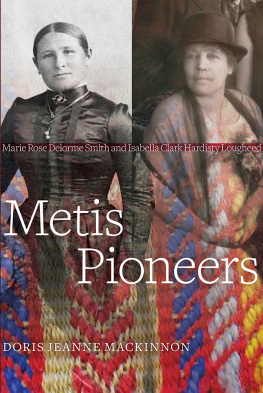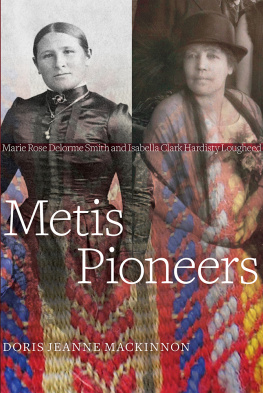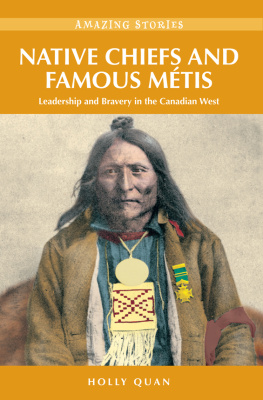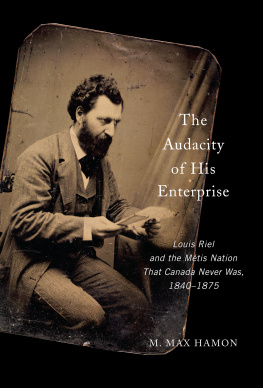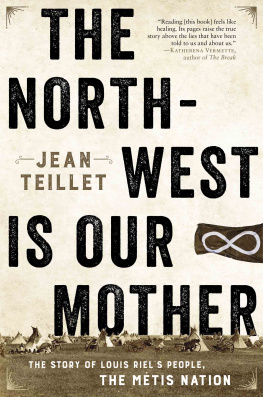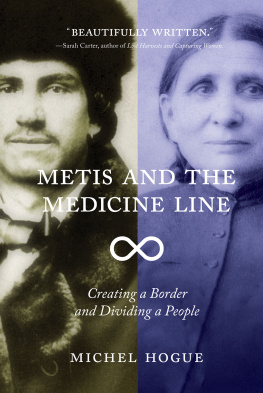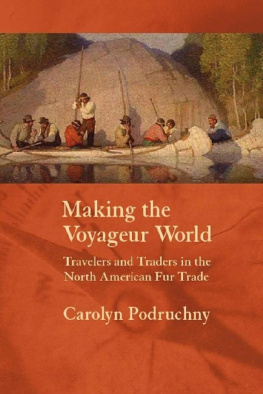
Published by
The University of Alberta Press
Ring House 2
Edmonton, Alberta, Canada T6G 2E1
www.uap.ualberta.ca
Copyright 2018 Doris Jeanne MacKinnon
LIBRARY AND ARCHIVES CANADA CATALOGUING IN PUBLICATION
MacKinnon, Doris Jeanne, author Metis pioneers : Marie Rose Delorme
Smith and Isabella Clark
Hardisty Lougheed / Doris Jeanne MacKinnon.
Includes bibliographical references and index.
Issued in print and electronic formats.
ISBN 9781772122718 (softcover). ISBN 9781772123630 (PDF). ISBN 9781772123616 (EPUB). ISBN 9781772123623 (Kindle)
1. Smith, Marie Rose, 18611960. 2. Lougheed, Isabella Clark Hardisty. 3. Mtis womenAlbertaBiography. 4. Mtis womenAlbertaHistory. I. Title.
| FC109.1.A1M33 2017 | 971.0049700922 |
| C20179051695 |
| C20179051709 |
First edition, first printing, 2018.
First electronic edition, 2018.
Digital conversion by Transforma Pvt. Ltd.
Copyediting by Kirsten Craven.
Proofreading by Joanne Muzak, Michael Lahey.
Indexing by Judy Dunlop.
Cover design by Alan Brownoff.
All rights reserved. No part of this publication may be reproduced, stored in a retrieval system, or transmitted in any form or by any means (electronic, mechanical, photocopying, recording, or otherwise) without prior written consent. Contact the University of Alberta Press for further details.
The University of Alberta Press supports copyright. Copyright fuels creativity, encourages diverse voices, promotes free speech, and creates a vibrant culture. Thank you for buying an authorized edition of this book and for complying with the copyright laws by not reproducing, scanning, or distributing any part of it in any form without permission. You are supporting writers and allowing the University of Alberta Press to continue to publish books for every reader.
This project was funded in part by the Alberta Historical Resources Foundation.
The University of Alberta Press gratefully acknowledges the support received for its publishing program from the Government of Canada, the Canada Council for the Arts, and the Government of Alberta through the Alberta Media Fund.

For Camille Joseph Robinson
A scholar living the life of a laboureryou taught me the value of hard work and humility.
For Alma Juliette Robinson
An artist living the life of a laboureryou taught me that to plant a garden is to believe in tomorrow.
Contents
Acknowledgements
THERE ARE MANY PEOPLE who have blessed me with their support for my research and for my desire to share the stories of these two amazing women. First, I would like to thank Peter Midgley at University of Alberta Press, both for his enthusiasm for this book and for his relational style of editorial work.
During the journey that culminated in this book, there were many who offered their support and advice. Those include the anonymous readers of this book whose suggestions served to inform and improve my research and writing. My supervisors and committee members at the University of Calgary provided invaluable expertise to the research and writing of the dissertation that formed the working document for this book, namely Drs. Heather Devine, George Colpitts, Warren Elofson, and Donald B. Smith. To Dr. Smith, I acknowledge the tremendous resources on Isabella Clark Hardisty Lougheed that he shared with Lougheed House National and Provincial Historic Site and Museum, which so enriched my research. To Donald McCargar, I acknowledge the continued support for my research into the life of his great-grandmother, Marie Rose Delorme Smith.
I acknowledge the Social Sciences and Humanities Research Council, the Eleanor Luxton Historical Foundation, and the Queen Elizabeth II Graduate Scholarship Fund for their support of my research.
Finally, I remain eternally blessed by the support of my family.
Note on Terminology
THE PARLIAMENT OF CANADA, by way of the Constitution Act, 1982, section 35, used the term Mtis in recognition of the Aboriginal status of people of Indigenous and Euro-North American ancestry who were not included as status Indians under the federal Indian Act. While section 35 did not define the term Mtis, leaving that task to the courts, provision was made to include Mtis people as distinct Aboriginal people. Over a century earlier, the French version of the Manitoba Act, 1870, used the distinction des Mtis residants , while the English version described the residents as half-breeds, suggesting that there were two separate and distinct groups. However, from that point on, references in Canadian legislation no longer made the distinction between the two groups.
In my earlier publications, I used the term Mtis. However, my research since those earlier publications confirms, for me, that the term Metis has become more inclusive and thus more appropriate. Therefore, this book uses the term Metis to describe people of Indigenous and Euro-North American ethnicity, unless it appears differently in the direct quotations of other researchers, or in contemporary publications, or in the words of Marie Rose and Isabella themselves.
In addition to the issues surrounding terminology, it is important to note that this book focuses on Metis identity and not on Metis nationhood or national consciousness. For a long time in Metis historiography, there existed a Red River myopia, in which the argument states that a distinct Metis identity and nationalism emerged in response to conflicts with outsiders, largely in the Red River area, such as those in 1816 (referred to by some as the Battle of Seven Oaks), and in 18691870 (referred to as the Resistance by some), as well as the broader conflict in 1885 (referred to by some as the Northwest Uprising). This focus on Red River has fuelled the notion of a There has often been a general consensus that a sense of Metis nationhood solidified as a result of the conflicts in the Red River, beginning in 1816 and specifically fuelled by the North West Company. However, there is more appreciation now for the fact that there was a distinct Metis identity and culture in geographic areas not only in the Red River region but also in areas removed from the Red River.
In reality, if there had not been a pre-existing distinct Indigenous identity among the Metis in 1816, the North West Company would have had little success in instilling a sense of Metis nationhood. In the end, the intent of this book is to examine the lives of two particular Metis women who lived their adult lives away from Red River, and not to examine in any depth the history of the Red River area (nor the concept of Metis national consciousness). However, references are made when they help to understand the formative years of Marie Rose and Isabella and how those experiences informed their adaptive strategies during the transitional period after the fur trade.
The term Aboriginal, as it is referenced in the Constitution Act of 1982, was intended to include First Nations, Metis, and Inuit. Much of Canadas historiography, when referring to Aboriginal people, has included the same groups as the Constitution Act, while many have referred to other groups as non-Aboriginal, particularly for the historical period when there was not yet a country of Canada. More recently, many scholars have replaced the term Aboriginal with Indigenous in recognition that their history is not bound by national borders. For the purposes of this book, unless appearing in direct quotations, the term Indigenous people will be used in reference to groups of people that are either First Nations, Metis, or Inuit. In recognition of the 1980 Declaration of First Nations by hundreds of chiefs and the subsequent re-establishment of the National Indian Brotherhood as the Assembly of First Nations in 1982, the term First Nations will be used as a general term to refer to Indigenous people who are not Metis or Inuit, while specific nations will be referred to by their names, such as Cree. The term Euro-North American will be used to refer to those people who interacted with Indigenous people who were not Indigenous themselves.
Next page
